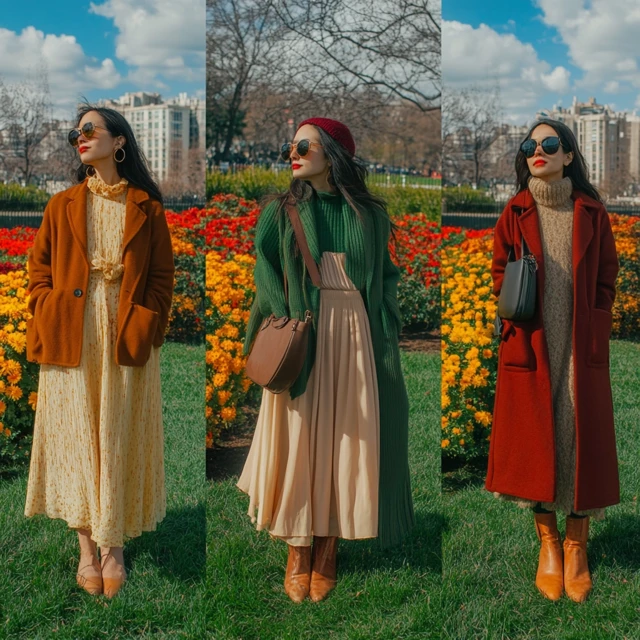
Comparison of Top Sneakers
Whether you're an avid runner, a casual walker, or a fashion-minded sneaker collector, choosing the right shoe brand can make all the difference in comfort, performance, and style.
Read MoreDressing well shouldn't be a headache each time the weather changes. With a little planning, you can craft outfits that seamlessly transition from cool spring mornings to hot summer afternoons—and from crisp autumn evenings to chilly winter days. It's all about layering, color palettes, and a few key staples that you can adapt for any temperature.
In this guide, we'll explore outfit ideas for every season, focusing on comfort, style, and easy adaptability. From lightweight layering for spring, breezy summer combos, cozy fall attire, to snug winter ensembles, you'll find tips to keep your closet functional and fashionable year-round.
As temperatures thaw and flowers bloom, spring fashion calls for transitional pieces that can handle mornings and evenings' chill with daytime mildness.
Spring is about layering strategically, so you're prepared for cooler mornings and mild afternoons without constant outfit changes.
Scorching days demand breathable fabrics and silhouettes that let you move freely. Keep it simple, airy, and swap heavier items for breezy alternatives:
Embrace bright colors or playful prints in summer—tropical florals, stripes, or bold color-blocking mirror the season's lively energy.
Autumn brings cooler breezes and a shift to warmer hues. Think cardigans, boots, and layering pieces that easily adapt to fluctuating weather:
Incorporate deeper colors—burgundy, mustard, forest green—for a quintessential fall palette that matches changing leaves.

Chilly winds and sometimes snow require heavier layers, but you can still rock polished ensembles. Keep layering advanced and cozy:
Mixing textures—like faux fur collars or plush scarves—adds visual interest. Accessories like gloves and beanies are an opportunity to play with color or pattern.
| Season | Recommended Fabrics | Key Benefits |
|---|---|---|
| Spring | Cotton, light denim, linen blends | Breathable, easy layering for fluctuating temps |
| Summer | Pure linen, airy cotton, rayon | Lightweight, wicks moisture, comfortable in heat |
| Fall | Light wool, corduroy, knit blends | Insulating yet not too heavy, perfect for layering |
| Winter | Wool, cashmere, fleece | High warmth retention, ideal for low temperatures |
Opting for seasonally appropriate fabrics keeps you comfortable and reduces the need for excessive layering or constant adjustments.
Accessories not only complete an outfit but also help you adapt quickly to weather changes:
These small enhancements let you re-use core pieces across different seasons, maximizing your wardrobe's potential.
Creating an all-season wardrobe doesn't require a closet overflow—just strategic layering, versatile fabrics, and mindful color schemes. From the fresh florals of spring to the snuggly knits of winter, each season brings its own style elements that you can seamlessly integrate with a few core staples.
As temperatures shift, remember to adapt your silhouettes, materials, and accent pieces. With these tips, you'll stay comfortable and on-trend—no matter if it's sunny, rainy, breezy, or snowing outside. Embrace each season with confidence and a stylish, weather-appropriate flair!